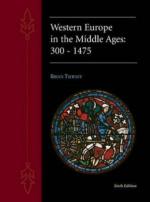|
This section contains 1,676 words (approx. 6 pages at 300 words per page) |

|
Liturgical Dance.
There is ample evidence from as early as the fourth century that dance was a frequent occurrence in church, serving as a component of liturgical services on special occasions, especially Easter and Christmas. That the tradition continued throughout the Middle Ages is attested to by a twelfth-century description of girls dancing during the Easter celebrations in London and references to thirteenth-century clerics in Gournay (near Rouen, France) dancing as a part of the feasts of the Innocents and of St. Madeline. The troubadour Pierre de Corbiac wrote in his Tesaur around the year 1250 that he knew how "to dance the Sanctus and the Agnus and the Cunctipotens," which refers to three prayers chanted during the celebration of the Mass. In 1313, members of the congregation of St. Bartholomew in Tauste, Spain, were taught by Rabbi Hacén ben Salomo to perform...
|
This section contains 1,676 words (approx. 6 pages at 300 words per page) |

|




